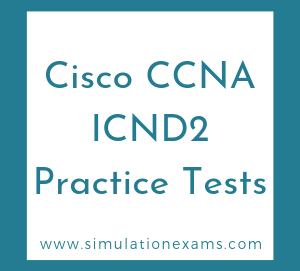Variable-Length Subnet Masking (VLSM) means implementing more than one mask on the same major class of a network. It allows for a more efficient use of IP address space both in terms of hosts and subnets, and can be essential on a network that does not have an abundance of IP address space.
The following routing protocols support VLSM:
Important characteristics of RIPv2:
Runts: This is the number of packets that have been discarded because they are smaller than the medium's minimum packet size. For Ethernet, a packet size of less than 64 bytes is considered a runt.
Giants: This is the number of packets that have been discarded because they exceeded the maximum allowable size of the medium. For Ethernet, a packet size of more than 1518 bytes is considered a giant.
Poison Reverse : When a router advertises a poisoned route to its neighbors,its neighbors break the rule of split horizon and send back to the originator the same poisoned route, with an infinite metric.
Split Horizon: If a neighboring router sends a route to a router, the receiving router will not propagate this route back to the advertising router on the same interface. Blocks the information about routes from being advertised by any router to the interface from which the information originated.
Hold-down Timers: The purpose is to provide the routers enough time to propogate the routes and to ensure that no routing loops occur while propagation occurs
LSA's : The packets flooded when a topology change occurs, causing network routers to update their topological databases and recalculate routes
Defining a maximum count : Used for preventing updates from looping the network indefinitely.
Route Poisoning : Advertises an infinite metric for a failed route to all its neighbors
Triggered update : Allows a RIP router to announce route changes almost immediately rather than waiting for the next periodic announcement.
Example:You have a network address of 196.202.56.0 with five Hosts on each subnet. You want to allow for maximum number of subnets. What is the subnet mask you need to apply?
Explanation :
I. The number of Hosts required are five. We need to add Hosts of all ones and all zeros to this. This is because all zeros and all ones subnets belong to "this Host" and "all Hosts" broadcasts and can not be used. Therefore, the total number of Hosts addresses to be reserved is 5+2 = 7.
II. We want to implement maximum possible subnets. Therefore, we need to minimize the number of Hosts. This minimum number is 7 here. If we reserve 2 bits, it results in only 2^2=4 Hosts which is less than 7. Therefore, we have to reserve 3 bits for implementing Hosts, resulting in 2^3=8 Host addresses. This is now optimized for maximum number of Subnets (as we have optimized for minimum number of Hosts). This also leaves us with 5 bits in the fourth Octet for implementing subnets.
III. Write the 5 bits available for subnetting in fourth octet in the form 11111000 (Five 1s being subnet bits). The decimal equivalent is 2^7+2^6+2^5+2^4+2^3= 128 + 64 +32 + 16 + 8 = 248.
IV. Now the subnet mask required is 255.255.255.248.
Classful routing protocols: RIPv1, IGRP are examples of classful routing protocols. It is important to know that classful routing protocols do not exchange subnet information during routing information exchanges. The summarization is always done automatically at major network boundaries.
Classless routing protocols: RIPv2, EIGRP, OSPF, BGPv4, and IS-IS are examples of classless routing protocols. In classless routing protocols, subnet information is exchanged during routing updates. This results in more efficient utilization of IP addresses. The summarization in classless networks is manually controlled.

Note: RIP and IGRP are not included in the syllabus for ICND2. Given here for the purpose of continuity.

